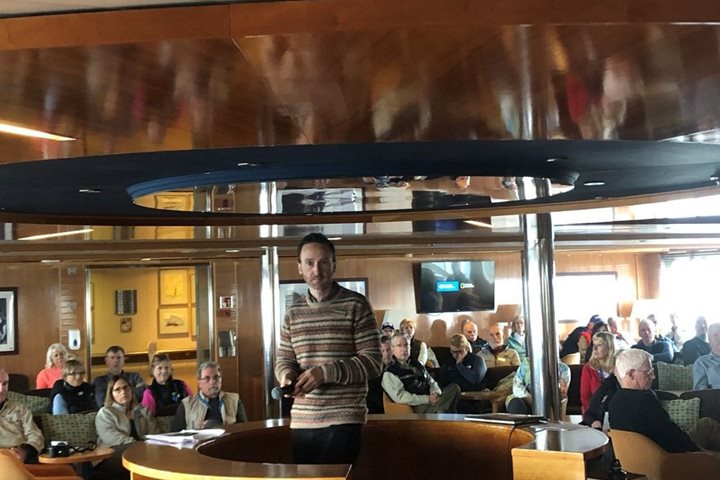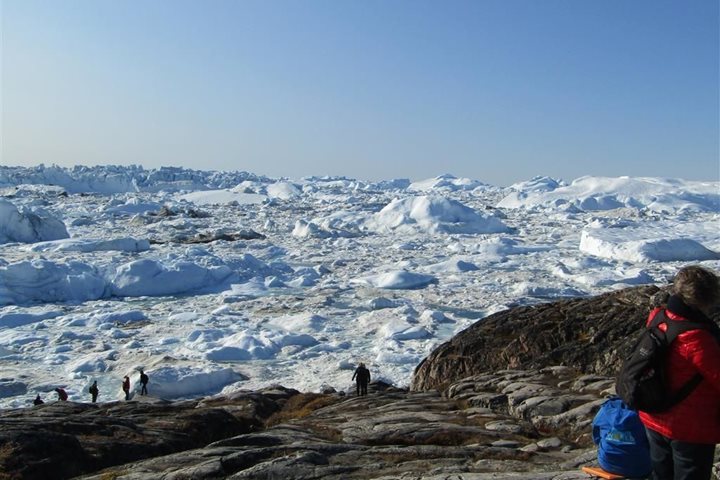Overnight National Geographic Explorer made her way through the waters of Pond Inlet and Eclipse Sound. By early morning we traversed the channel between Bylot Island and the Borden Peninsula, on the northern tip of Baffin Island. This is a multi-textured landscape. Glaciers have cut numerous valleys down to the coast. Vertiginous cliffs were capped by horizontal bands of grey clouds and flanked with impressive scree slopes. These latter are the result of the weathering process of freeze-thaw. Shadow and light interplayed on water, ice and rock.
Leaving Baffin in our wake we made our way out into Lancaster Sound. This body of water played a central role in the search for the elusive Northwest Passage. Numerous expeditions probed along its length in the hope of successfully finding a way to the Pacific. The shores of this archipelago are littered with the remains of sailors whose dreams were shattered in this harsh Arctic environment. Devon Island was seen on the distant horizon. The south-east corner where Dundas Harbour is located was our landfall for the late afternoon. This is an isolated but stunningly beautiful place rich in archaeological and historical remains. We divided into groups to hike and explore the small peninsula. The light snow showers added to the atmosphere as we searched for ancient remains.
Thule winter houses are in abundance. These circular structures, with a narrow, slightly inclined entrance crawl, were constructed of a combination of stones and grass sods. The roof would originally have been of seal skin stretched across a frame of whale bone or timber. Scattered around each of these houses were fragmented bones of whale, polar bear, seal and walrus. Close by we explored a layer of midden material discarded by the hunter-gatherer inhabitants of this settlement over 800 years ago. Wave erosion is progressively wearing the midden away and bones of a variety of animals were identified including seal, polar bear, caribou, Arctic hare, dog and whale. Bearing cut marks, these are clearly the remnants of meals.
In a sheltered harbour a short distance away are the remains of a Royal Canadian Mounted Police outpost. This was initially established in 1924 with the arrival of three constables. This spot was chosen because it overlooks the eastern approach to Lancaster Sound. From here the police scouted across long distances on dog sledges with the help of Inuit guides. The outpost was officially closed down in 1951 and is in a quite ruinous state. The main living quarters, work shed and food store are strewn with everyday items including hundreds of empty food tins, bottles and books. A deep sense of isolation must have been ever present. The surrounding landscape almost overpowers.
The tiny graveyard situated on a low ridge behind the complex is Canada’s most northerly and is tended once a year in memory of the two constables who are interred there. The high cliffs here on Devon Island are fretted by vertical narrow channels on their upper reaches. In Inuktitut it is called Talluruti, which means “a woman’s chin with tattoos on it,” because it resembles the traditional pattern of face decoration used by the Inuit for centuries. Having explored the site we walked across the tundra back to our landing site, taking in the fantastic vistas.







